Astronomy is a wonderful way to unwind and relax, and so what better activity for your trip away than looking at the sky from a stargazing tent.
As we head into the summer holidays, many people are turning to camping holidays as a way to beat the queues at the airport and avoid the costly expense of hotels.
But camping holidays are also a great opportunity to do some stargazing.
Located away from urban centres, camping offers not only a get away from the stresses of modern life, but light pollution as well.

It’s why star parties – where dozens of like-minded astronomers gather together to watch the stars – have found such a home in the campgrounds of the UK.
Thankfully, there are lots of places to stargaze in the UK where you can put up your canopy under the stars, including several official Dark Sky Places, recognised by the International Dark Sky Association.
But once you’ve decided where to go, bought your travel telescope and accessories, there’s still one all important piece of equipment you will need – a stargazing tent.
Discover our pick of the best space backpacks
How to choose a tent for stargazing while camping
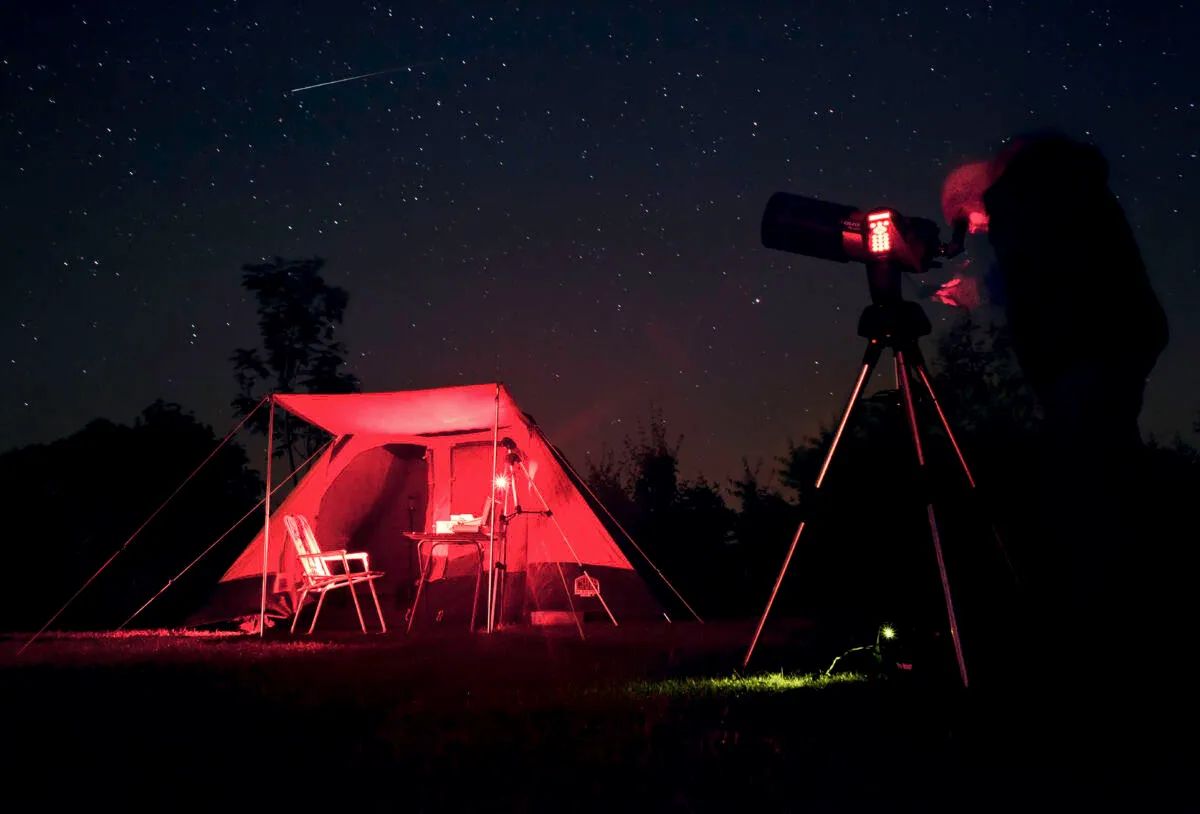
What kind of tent you need really depends on what kind of stargazing camping trip you're taking.
If you’re heading out or a family holiday, then astronomy is likely to just be one concern of many.
In that case tents with large windows that look skyward, but which can also be used for sleeping or as dedicated relaxing areas, are a good option.
For those going on trips where the primary goal is observing dark skies with your best telescopes or you’re heading off to a star party, then you’ll want something that can accommodate all your equipment.
In that case you’ll be looking for tents with dedicated storage areas or vestibules where you can keep your kit.
You also might want to look for tents that you can fully stand up in, so you won’t have to crawl around on your knees or bend over double as you set up your equipment.
It's also a good idea to bring a suitable astronomy or stargazing chair.
What to bring on an astronomy camping trip

The kind of trip you are undertaking will determine what you need to bring on an astronomy camping trip.
If you want a more detailed look at how to plan your trip, head on over to our guide to astronomy travel, but for now here’s a kit list of the essentials for astronomy camping.
- Telescope
- Binoculars
- Red light torch
- Warm clothing, including hat and gloves
- Food and drink
- Maps: both for the sky and local area
- A power pack to charge your phone and other devices
If you’re attending a star party, where you won’t be travelling far from your car or your equipment, you might be happy to take along your 20-inch Dobsonian, but for most camping trips you’ll need something a bit more portable.
For our suggestions, have a look at our best travel telescopes and our best binoculars for astronomy guides.
Best stargazing tents
Some of the greatest views of the night sky come from just laying on your back and watching the heavens wheel above, lulling you to sleep.
However, for UK astronomers, insects, changeable weather and the wind can make doing so a fraught prospect.
Falling asleep under the stars sounds like a romantic prospect, until you wake up soaking, covered in midge bites, with a crick in the neck from the wind.
Fortunately, there are several tents out there with inbuilt windows, and even completely see-through tents, which will let you stargaze from within the protecting confines of your canvas walls.
Kelty Dirt Motel camping tent
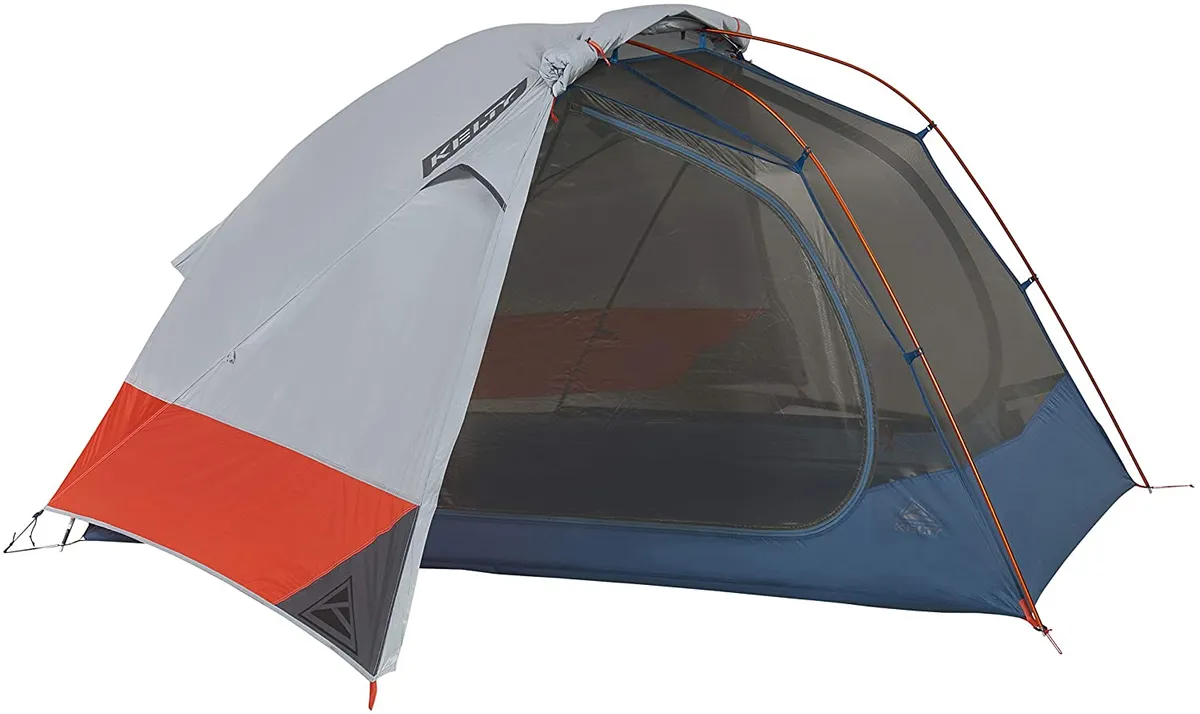
The waterproof flysheet can be easily rolled back, letting you look through the mesh underlayer.
You can even remove the flysheet entirely to gain a 360 degree view of the night sky.
Though the dark mesh does partially obstruct the view, it allows you to look up at the stars from the comfort of your sleeping bag without having to worry about mosquitoes, and can quickly drop the flysheet back in place if the weather starts to turn.
Comes in two and three person sizes if you’re travelling with a friend, or just have a lot of equipment you want to store.
Suitable for use in autumn, spring and summer, and has reinforced seams for further weather protection.
MSR Hubba Hubba NX tent, 2-person
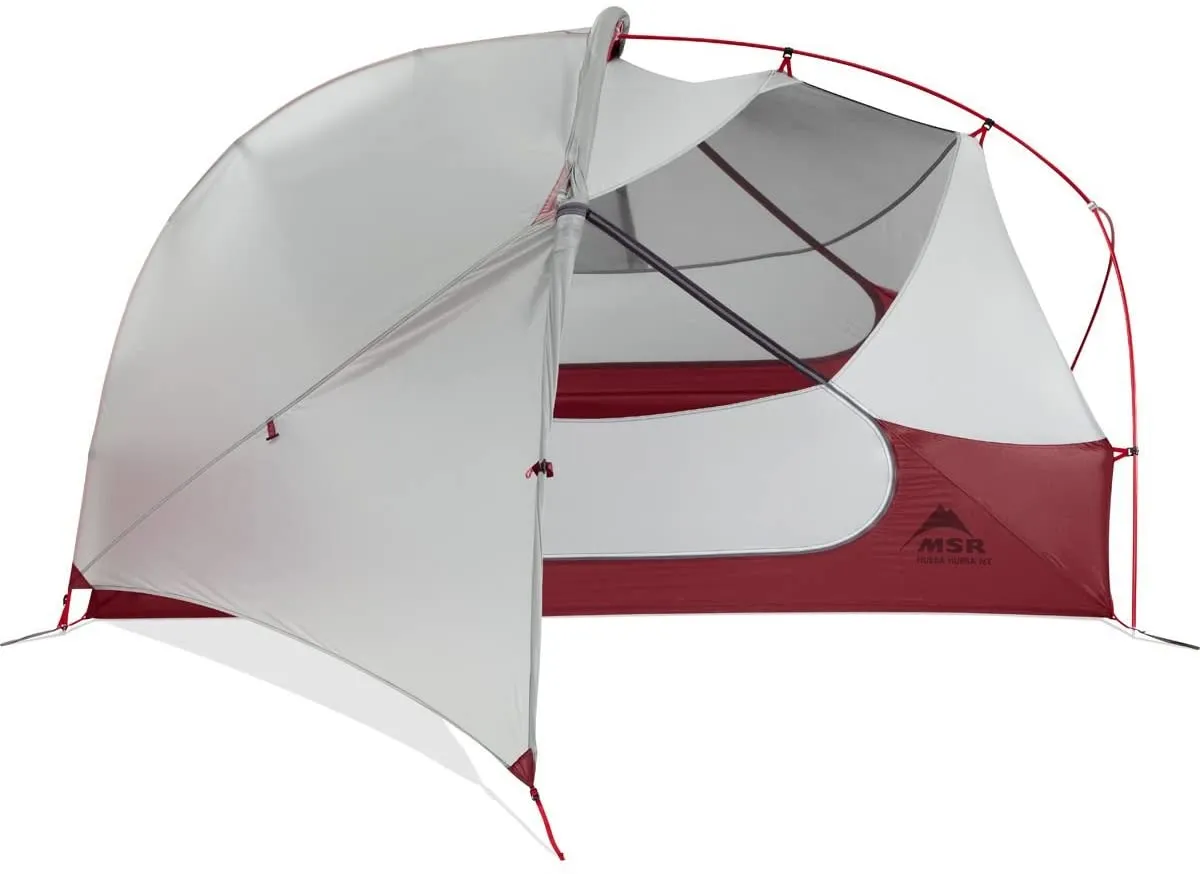
This three-season tent for two weighs just 1.6kg, making it a great option for packing when you hike off the beaten track and into the wilderness.
The flysheet rolls back to reveal a mesh stargazing ‘window’ that you can look through while lying down, thought a central panel does block some of the view if you completely remove the flysheet.
There are two small porches for storing kit, however these aren't as sealed as the sleeping section so might not be suitable for expensive kit.
There are separate gear sheds available, which attach to the entrance to expand this storage space and weighs just 820g.
Alvantor bubble pop up tent
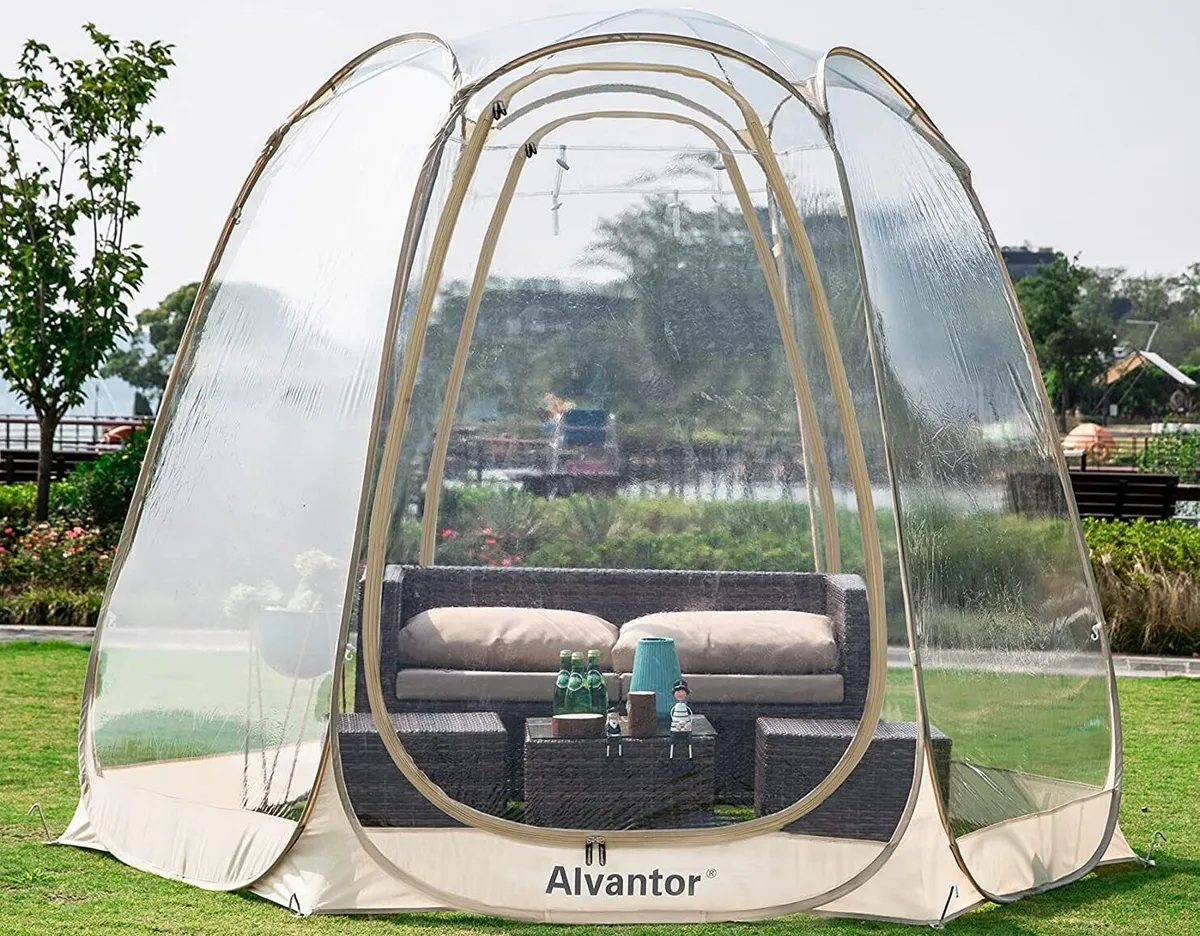
The Alvantor Bubble tent is made from see-through plastic, granting an unobstructed 360 degree views of the night sky, and can double as a nice relaxation area during the day.
The clear tent measures over 2m high inside, meaning you should be able to stand up and move around inside.
Despite being large enough to house several people, putting the tent up is a breeze as its pop-up nature means it will set itself up in a matter of seconds. Then all you need to is peg it down.
As the tent is clear on all sides, there’s no privacy so it’s probably not going to be your main sleeping quarters or a good place to store expensive equipment.
It also weighs over 10kg, so may be best suited as an additional room to your camp site.
Comes in three sizes, to best suit your needs.
Tents for housing telescopes
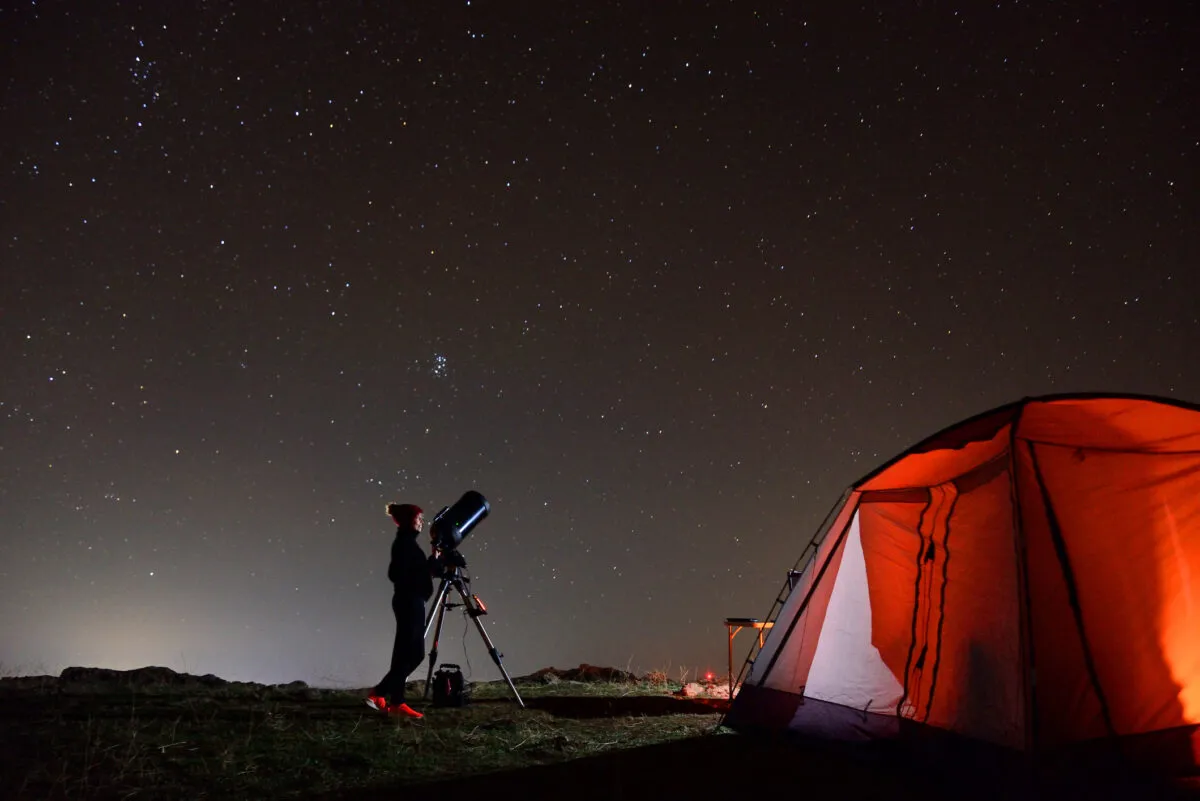
If you’re bound for a more serious stargazing trip or a star party, then you’re probably taking your telescope along with you.
As anyone who has been camping knows, tents are not renowned for their spacious equipment storage.
While sizing up your tent is an option, without the extra body to keep it warm these can get quite cold – while astronomers might love their telescopes, they are a little uncomfortable to snuggle up to at night and your partner might start to get jealous.
These stargazing tents offer plenty of room for you to both sleep and store your kit while going astronomy camping.
Wild Country Hoolie Compact 2 ETC Tent, 2-person

SQUIRREL_TEXT_13052229
Designed as a backpacking and hiking tent, the Hoolie Compact weighs just 3.1kg and packs down to 30cm by 22cm, making it’ll easily fit in your back pack.
When assembled, however, the tent comes with not only sleeping space for two people, but a huge 2m by 1.6m porch that can fit all manner of equipment.
This porch also comes with a large door, meaning you can set your telescope up just outside while running things from the shelter of your tent.
If you’re heading off into the wilds to find the darkest of dark skies, this might just be the astronomy tent you’re looking for.
Coleman Blackout Tent, 3-person
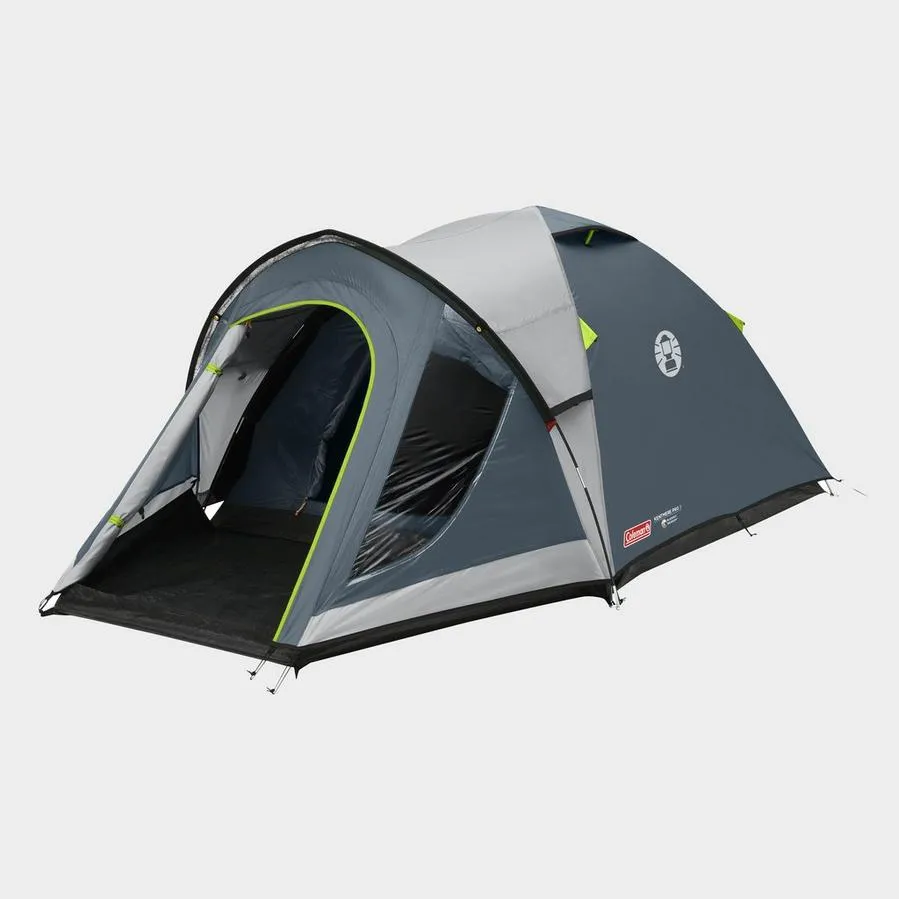
While most tents are water and windproof, there is one aspect of weather they usually don’t block out – sunlight.
When you’re observing all night, trying to sleep during the day in a tent that’s almost as bright as it is outside isn’t easy.
The Coleman Blackout, however, stops 99 per cent of sunlight meaning it will be dark enough inside for you can get a decent days sleep in this astronomy tent.
The porch is small, so cannot store a lot of equipment but it’s designed for three people, so if it’s just you and your telescope, there should be plenty of room.
Arpenaz Fresh & Black tent, 4-person
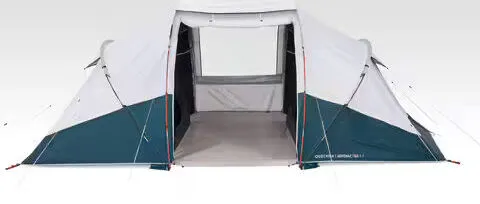
SQUIRREL_TEXT_13053198
Another blackout tent, this model has two separated rooms which each sleep two people, with a large vestibule joining the two.
The tent is made with a special fabric that reflects sunlight, not only keeping the bedrooms dark, but helping them stay cool as well, so neither you nor your kit will overheat during the day.
The double bedroom means you can share with a friend while maintaining your privacy, or have separate sleeping and equipment areas.
The spacious tent is 1.9m high, meaning you don’t have to shuffle around and the central vestibule can function as a nice place set up operations for your astrophotography gear while your telescope is placed just outside.
Observatory tents
Star parties and camping trips offer a great opportunity to get away from light pollution, but they often bring in another factor to content with – the wind.
With no garden fences to help shelter, the wind can really become blustery, causing your telescope to sway and shake, ruining your view.
Here are a few options that could help build your own little observatory away from home.
Caperlan fishing shelter
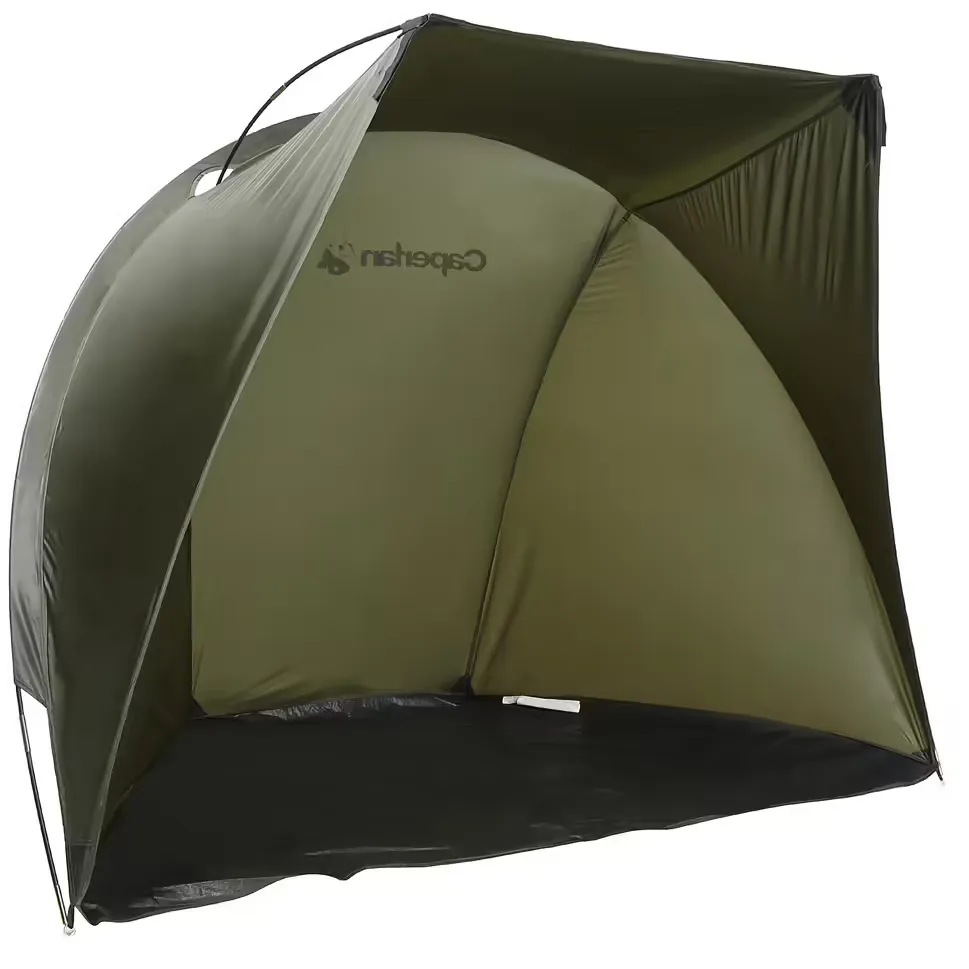
When it comes to spending long nights at the eyepiece, how cold you feel often has more to do with how windy it is than the ambient temperature.
Originally designed to protect anglers from the elements, this open sided fishing shelter keeps the wind chill from getting to you.
And if you’re a solar observer, the tent can also help protect you from getting sunburn over a long imaging session.
This is the XL version, designed to fit two anglers, meaning there’s plenty of room to store your accessories, and shelter your laptop and electronics if you’re running an imaging session.
It’s light weight and compact, meaning it could be carried in a backpack if you're venturing away from the traditional camping grounds.
Explore Scientific Observatory tent
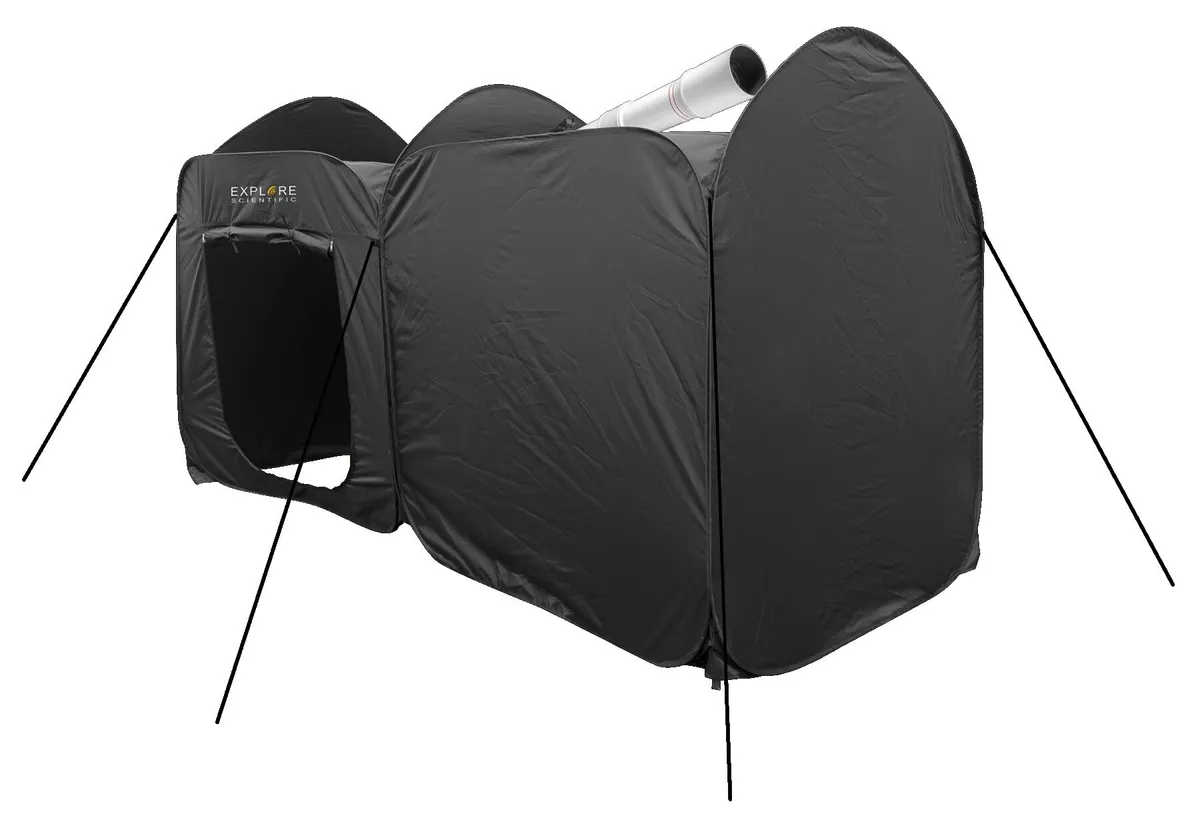
SQUIRREL_TEXT_13053200
If you’re looking for an astrophotography tent, then this might be a great option.
The Explore Scientific Observatory tent has two roofless, rooms so you can set your telescope up in one section, and have your laptop and computing equipment in the other, safe in the knowledge that the 100 per cent nylon black out canvas will prevent all light from leaking through.
Each room measures 152cm on each side, and are both roofless to allow unobstructed views of the night sky.
If the weather does turn, there’s a cover you can place over both sections, or you can just cover the ‘computer room’ to prevent any stray light escaping.
It’s a pop up tent that can be set up and taken down in a matter of minutes, but that also means that it’s bulky and difficult to carry, and it doesn’t come with any kind of ground sheet or flooring so you’ll need to get your own.
This would be best suited to something like a star party, where you will be observing at the campsite, rather than hiking into the wilderness.
Omegon Observatory Tent
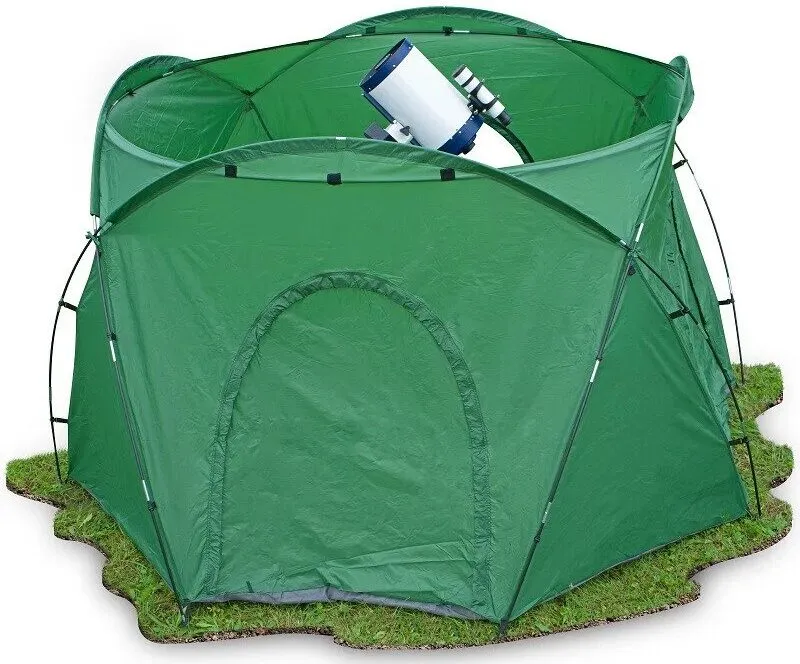
- Buy now from Astroshop.eu.
The Omegon Observatory Tent consists of a 2.8m diameter 1.4m tall dome tent with a removable roof.
It has a large 2m diameter door, meaning you can easily carry in your equipment, and the tall roof allows you to leave your kit set up.
It weighs just 4.5 kg, and fits into a nylon duffle bag that can easily be carried, though it is quite large and so would take up a lot of space in the back pack.
When the roof is on, it is secured by Velcro and has two extra poles to lift up the canopy for extra height. These can easily be removed when observing time comes.
As the tent is constructed from separate poles and canvas, meaning it does take a few minutes to set up and take down, but is far more rigid and can withstand stronger winds.
The canvas isn’t completely light proof, but will help eliminate the odd stray torch at a campsite.
